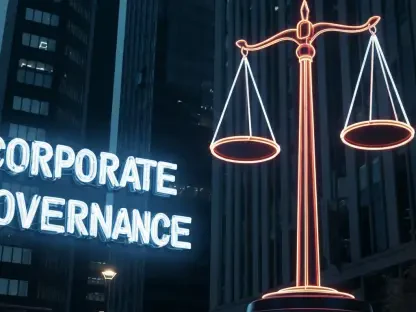The U.S.-Mexico border has long been a flashpoint for complex immigration debates, but few issues have sparked as much legal and ethical contention as the policy of metering, which involves turning back asylum seekers on the Mexican side without offering them a chance for screening or a hearing. This practice, implemented to manage overwhelming migrant numbers, has drawn sharp criticism from advocacy groups who argue it undermines fundamental protections enshrined in U.S. law. At the heart of the controversy lies a critical question: must asylum seekers be physically inside the United States to request protection, or does denying them entry at ports violate both domestic and international obligations? As the Supreme Court takes up a pivotal case challenging the legality of this border control tactic, the decision could reshape how the nation balances humanitarian duties with the practical demands of border management. The implications are profound, affecting not just policy but the lives of countless individuals fleeing persecution.
Legal Foundations and Challenges of Metering
The legal framework governing asylum in the United States is clear in its intent to provide a pathway for those facing persecution based on factors such as race, religion, or political opinion. Under existing statutes, migrants arriving at American ports of entry have the right to apply for asylum by demonstrating a credible fear of returning to their home countries. However, the practice of metering has been accused of circumventing these protections by preventing individuals from even initiating the process. Legal advocates argue that turning people away before they can set foot on U.S. soil effectively denies them their statutory rights, creating a barrier that contradicts the spirit of asylum law. This perspective has gained traction in lower courts, notably the 9th Circuit, which has challenged the policy as unlawful. The ongoing Supreme Court case represents a critical juncture, as it will determine whether such border practices align with the nation’s legal commitments or constitute an impermissible restriction on access to protection.
Beyond the legal arguments, the human impact of metering raises significant ethical concerns that cannot be overlooked. Critics highlight that blocking access at official entry points often leaves desperate migrants with no choice but to attempt dangerous, unauthorized crossings through harsh terrains like deserts and mountains. Such journeys frequently result in injury or death, underscoring the dire consequences of policies that limit safe avenues for seeking refuge. Moreover, data shows that asylum grant rates have plummeted, with only about one in five requests approved in recent years, suggesting that even those who manage to apply face slim chances of success. If the Supreme Court upholds metering, it could further narrow these already limited pathways, exacerbating the risks for vulnerable populations. The tension between enforcing border control and upholding humanitarian principles remains a central issue, as the nation grapples with how to address both security needs and moral obligations in an increasingly complex migration landscape.
Administrative Justifications and Policy Dilemmas
From the perspective of past administrations, metering has been defended as a necessary tool to manage the sheer volume of asylum claims that strain an already overburdened immigration system. Supporters of the policy argue that without some form of regulation at the border, the influx of migrants could overwhelm processing facilities and courts, leading to significant delays and inefficiencies. This pragmatic stance emphasizes the logistical challenges of handling large numbers of arrivals, particularly during surges, and positions metering as a mechanism to maintain order and prioritize resources. Legal scholars, such as UC Davis professor Kevin R. Johnson, have noted that the Supreme Court may show deference to such administrative efforts, given historical precedents favoring executive discretion in border management. Yet, this approach raises questions about whether practical necessities should take precedence over statutory rights, highlighting a deep divide in how to interpret the balance of law and policy.
The broader implications of sustaining metering as a border control strategy extend beyond immediate logistics to long-term policy and societal impacts. If the Supreme Court rules in favor of the practice, even with limitations, it could embolden future administrations to implement similar restrictive measures, potentially normalizing barriers to asylum access. Conversely, a decision to strike down metering might reinforce legal protections for migrants but place additional pressure on border infrastructure, requiring substantial investment in processing capacity and judicial resources. The debate reflects a fundamental conflict between strict adherence to asylum laws and the need for manageable enforcement mechanisms. As Johnson suggests, a middle ground may emerge, with the Court possibly allowing metering under specific constraints. However, any outcome will likely set a precedent that shapes U.S. immigration policy for years to come, influencing how the nation navigates the delicate interplay of legal mandates, resource allocation, and humanitarian considerations at its borders.
Looking Ahead: Balancing Law and Humanity
Reflecting on the trajectory of this issue, the Supreme Court’s deliberation marks a defining moment in the ongoing struggle to reconcile legal obligations with border realities. The arguments presented by both sides illuminate the stark challenges faced by policymakers and migrants alike, as the nation wrestles with the consequences of metering as a control mechanism. The data on declining asylum approvals paints a sobering picture of the hurdles already in place for those seeking refuge, while stories of perilous crossings underscore the human toll of restricted access. As the decision looms, it becomes evident that the ruling will carry weight far beyond the courtroom, influencing the lived experiences of countless individuals.
Moving forward, stakeholders must prioritize solutions that address both the legal and practical dimensions of this complex issue. Enhancing border processing capabilities through increased funding and personnel could alleviate some of the strain that metering seeks to address, while ensuring compliance with asylum laws. Additionally, international cooperation with neighboring countries might offer alternative pathways for managing migrant flows without compromising humanitarian standards. The path ahead demands a nuanced approach, one that upholds the integrity of legal protections while adapting to the evolving challenges at the border, ultimately striving for a system that honors both security and compassion.









